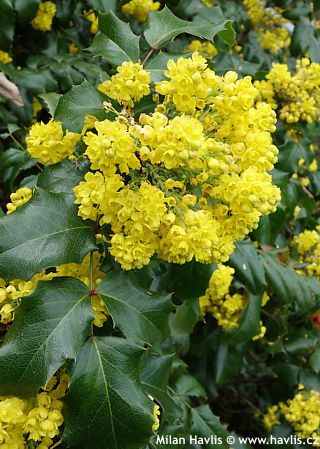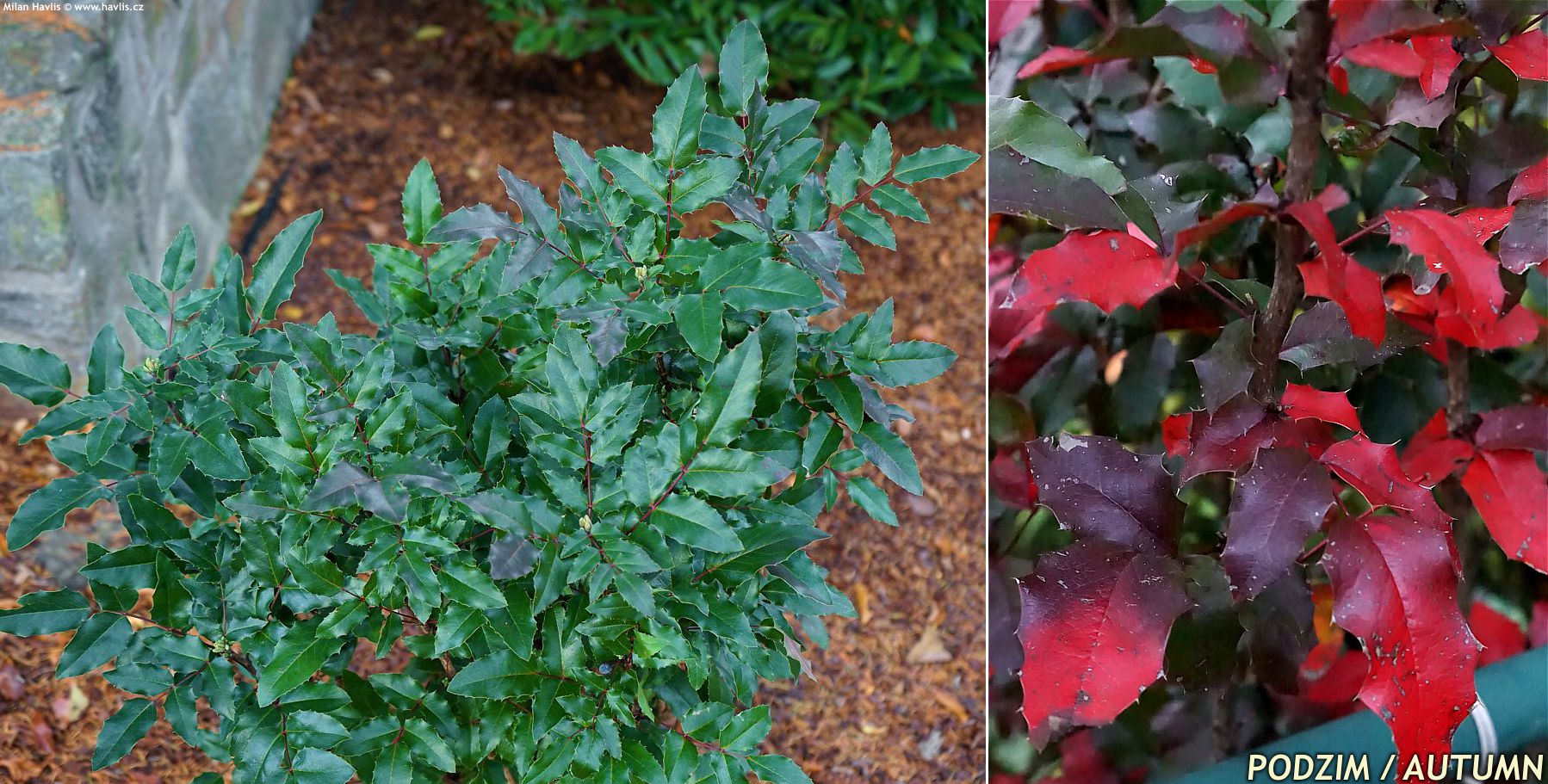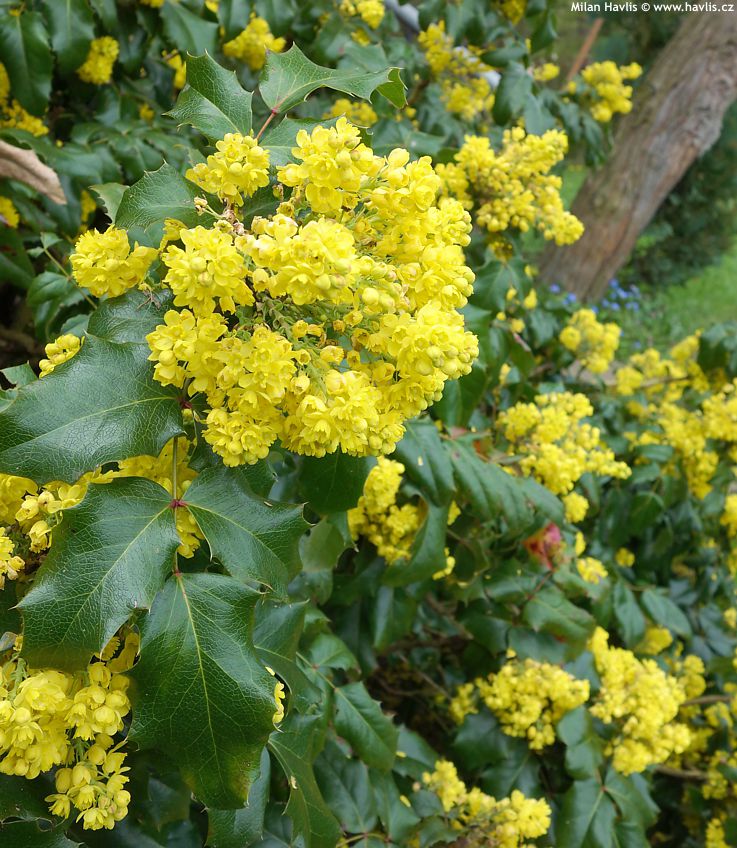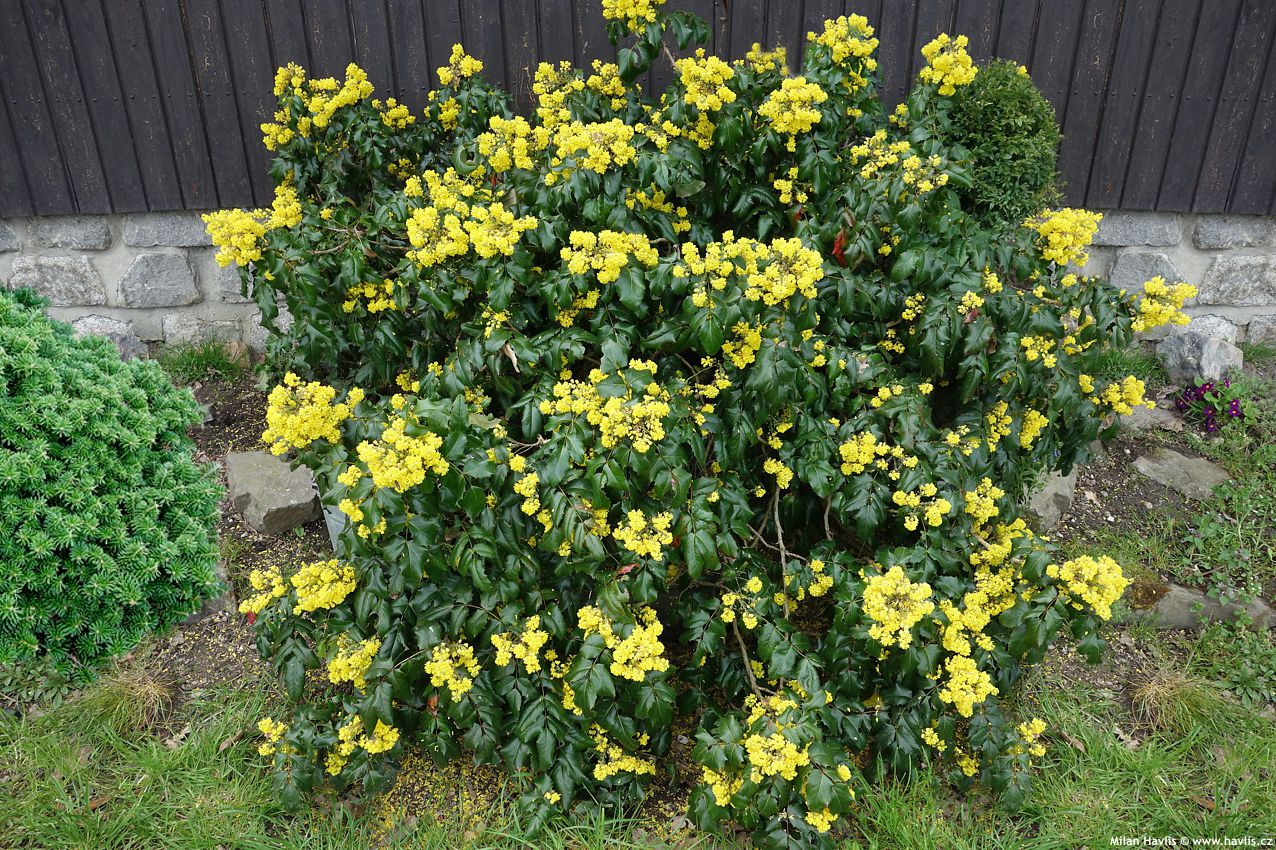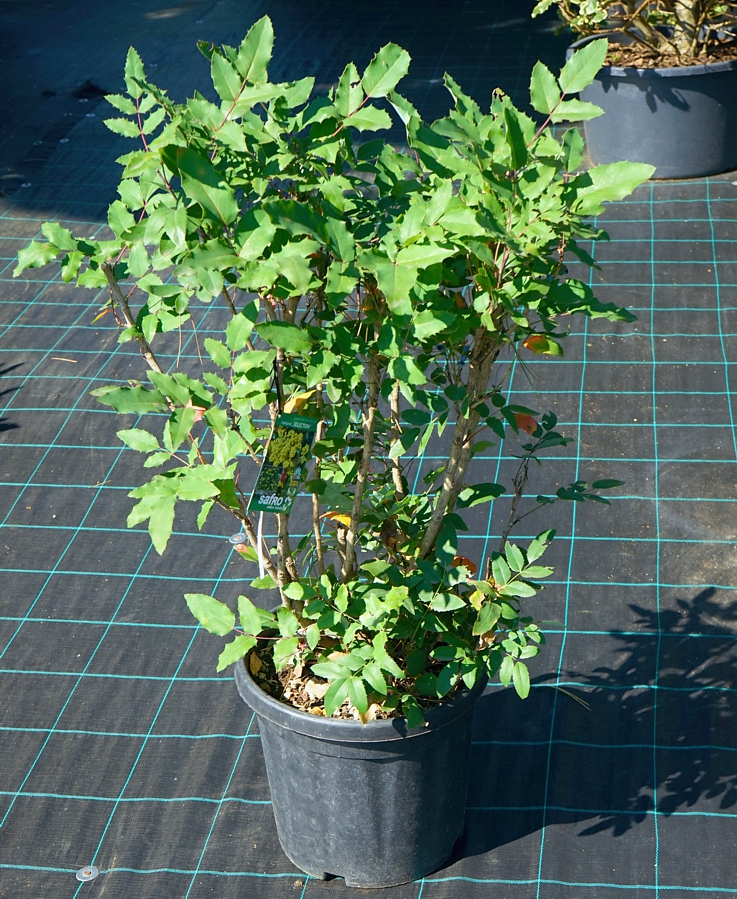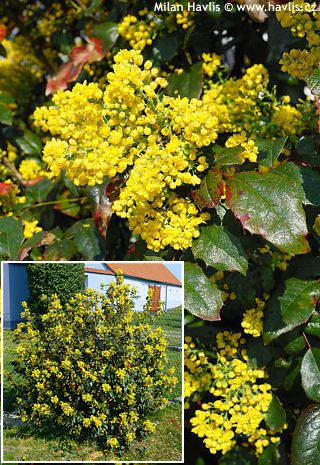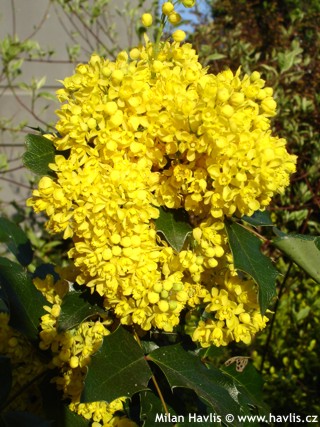Mahonia aquifolium 'SELECTION' Oregon grape, Oregon grape holly
Mahonia
Oregon grape or Oregon grape holly is an old-fashioned plant that is so easy to grow and that can turn into a jewel in your garden if you give it what it needs. We commonly see it in neglected cottage gardens where it does not often look its best, put in the silliest corner, just waiting for the autumn to be sheared like a sheep for the attractive evergreen leaves. It comes from North America (British Columbia to Oregon) and was named in honour of Bernard McMahon (1775-1816), a significant American nurseryman of Irish origin. It was first introduced as a garden plant in 1823 and our first Czech plant was planted only some 20 years later in 1844, in Královská obora (the Royal preserve, in existence from the Middle Ages) in Prague.
Selection is a very simple name of Oregon grape holly that is really a mahonia selection of probably Italian origin that appeared after 2020 and lacks a proper variety name. It differs from the botanical species in its firmer leaves with less prickly margins, and denser habit. Its leaves are pinnate, composed usually of five or five main and 2 small narrowly ovate to oval leaflets. They are evergreen, leathery, matte and olive green as they emerge, and very dark green and glossy from summer until autumn when some of the leaves turn bright red and maroon if cultivated in a sunny location. These coloured leaves will fall off in spring and will be replaced, still, most of the leaves remain on the plant, unchanged, throughout the year.
In April, it makes short, raceme-like, upright panicles composed of thousands of small, sulphur-yellow, strongly scented flowers. They are followed by oval, blue berries in late summer. They are not poisonous, they are even classified as edible and were formerly used as a cheap substitute for true grapes in winemaking, and to dye real wine if its colour was too weak. The juice is not recommended for pregnant women.
Selection Oregon grape makes bushy, upright, somewhat dome-shaped shrubs of versatile use – small specimens in front yards, combined with other shrubs or conifers in an evergreen border, and is often used in mass plantings in parks where evergreen foliage is the key demand. It grows rather slowly.
Oregon grape will tolerate almost anything but it will thrive in moist soil and filtered sunlight. For best results provide year-round mulching above its roots to retain moisture. This way it can cope with full sun, too, where it will exhibit the best habit. It will also grow in full shade. Pruning of any sort, even back pruning is possible after flowering and the plant will always look better rejuvenated. Occasional fertilizing will enhance its appearance but is not a must. The best soil is slightly acidic, well-drained, yet it proved to cope with much worse soil conditions – chalky or slightly clay with occasional waterlogging. Although it is generally not recommended for too dry locations such as arid street strips and heat-absorbing parking lots, it has been observed to handle occasional droughts and its roots have even resisted fires. Late frost doesn't harm its flowers at all, they can bloom and be covered with snow again. Fully hardy to min. -29 °C (USDA zone 5) and in protected habitats it can withstand down to -34 °C.
Last update 25-01-2023
Goods are shipped all over Europe. For Russia and U.K. and for further details please read about SHIPPING OPTIONS HERE.
Are you interested in a serious discount for orders NOV-FEB? Check your options here.
THE PRICES INCLUDE VAT of 15%. For quick conversion you can use 1 CZK = approx. 0.04 EUR
- STANDARD QUALITY - Plants of this group are 1st class quality with number of branches and overall density adequate to their size and age, considering they were container grown.
- DE LUXE QUALITY - This label guarantees a luxurious quality of manually selected plants that, compared to their height and age, are exceptionally dense and beautiful.
- EXTRA - These plants are usually mature and bigger specimens with exceptional overall appearance.
- STANDARD (as described in the plant form) means a tree with a trunk of 190-210 cm and a crown at the top, unless specified differently. The commercial size for trees is their girth measured in the height of 1m from ground.
- HOBBY - These plants are of the same quality as our standard-quality plants but younger and therefore cheaper.
- SHRUB - a woody plant with branches growing bushy from the ground level.
- HALF-STANDARD or MINI-STANDARD - a small tree with shorter trunk, its size is usually specified.
- FEATHERED - These are trees with branches growing already from the base of the trunk and up along the stem.
- GRASSES and PERENNIALS - Sizes given usually read the diameter of the pot or the clump, as specified.

































